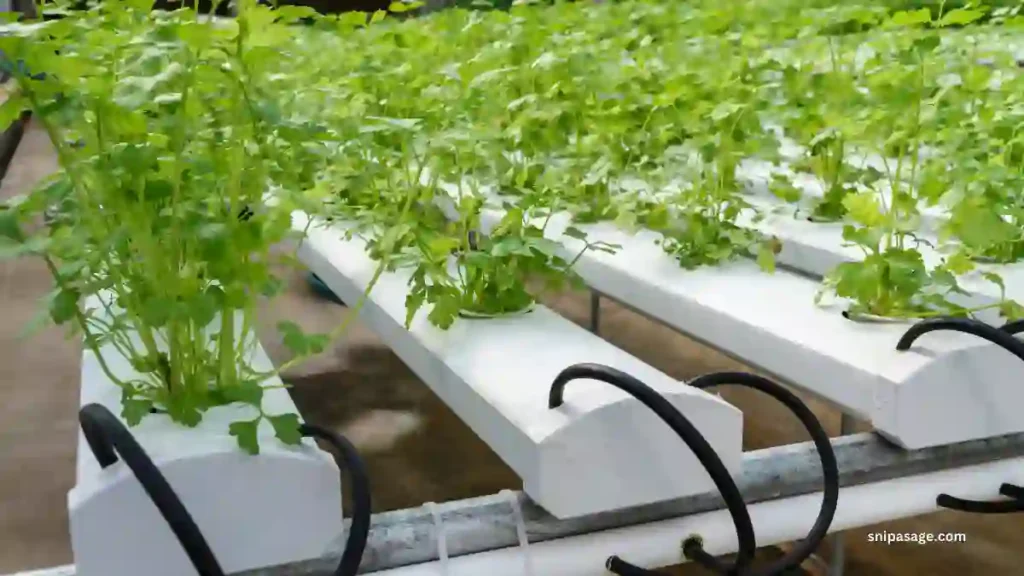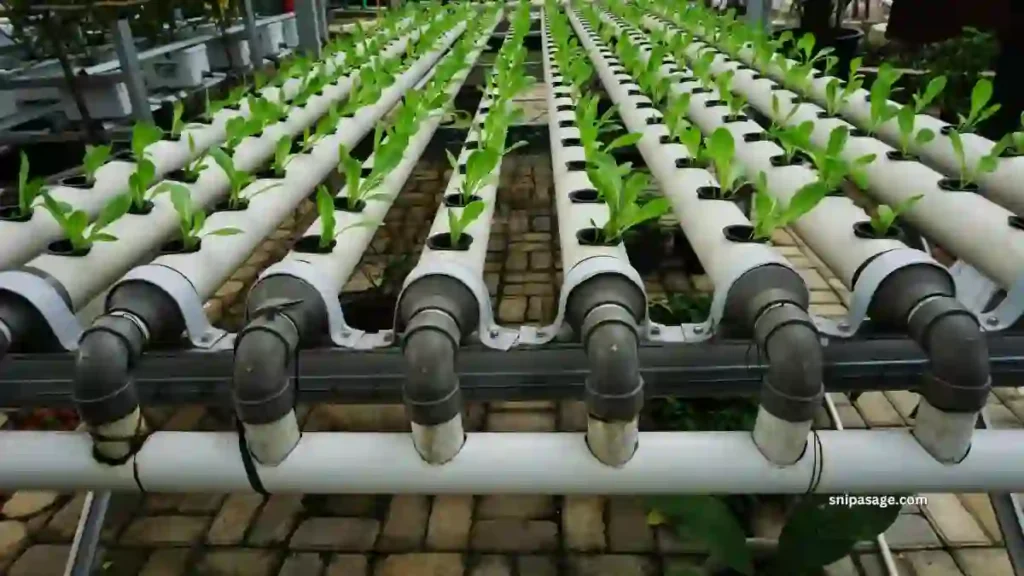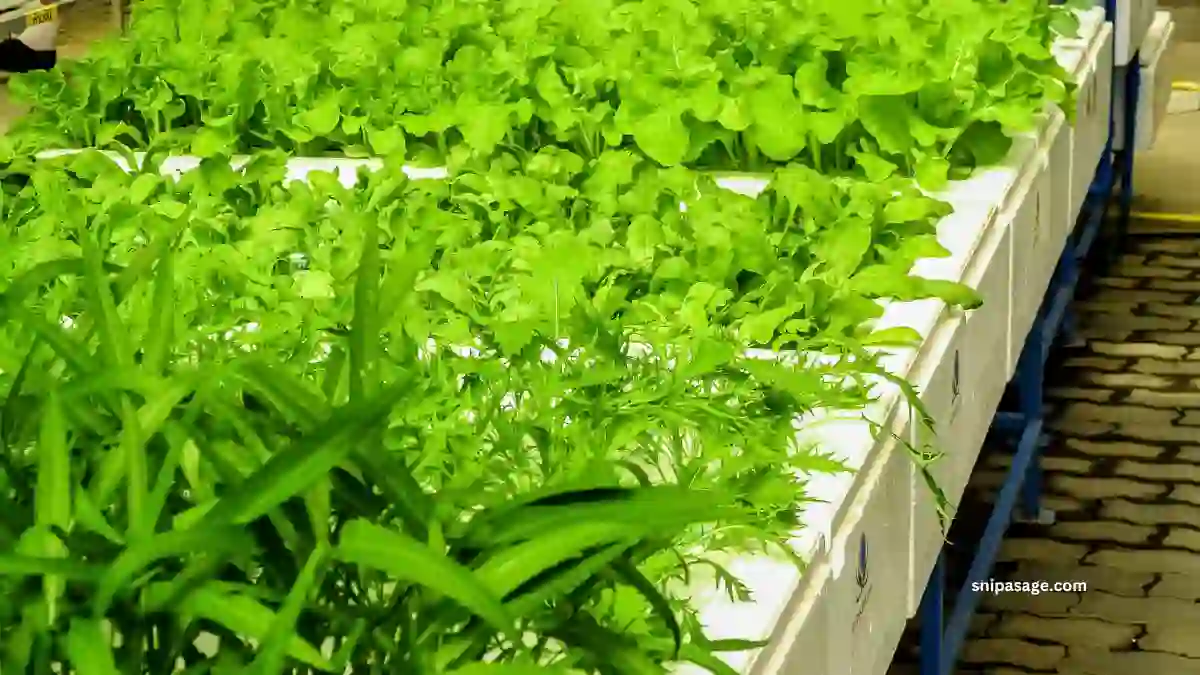Growing plants in water with nutrition instead of dirt is called hydroponic farming. You control how the plants grow, how much light they receive, and how much water they get. Hydroponic cilantro becomes easy to pick whenever you want.
When you grow cilantro without soil it has many advantages to regular gardening, such as having more control over light and food for the plants, less water wastage as well as being able to do this in a smaller area. Pick some tasty cilantro throughout the season by following this guide.
How to Grow Hydroponic Cilantro
Choosing the Right Hydroponic Cilantro Seeds
A good choice of cilantro seeds is very crucial in ensuring that they can grow well. Get fresh seeds not contaminated by molds or insects and check their labeling too. Ensure that these seeds are also suitable for hydroponics cultivation.
How to Germinate Cilantro Seeds in Hydroponics
A propagator or tray filled with a well-drained, sterile potting mix is the best place to germinate cilantro seeds. Position them on top of the soil, then gently cover them with a thin layer of soil. Afterward, spray water onto the tray carefully before finally placing it on a sunny spot.
Choose the Right Hydroponic System

Choosing the correct hydroponic system is very important, depending on whether it’s NFT (Nutrient Film Technique), DWC (Deep Water Culture), or Aeroponics. We will help you choose what fits your space and your interests. Cilantro grows best using the DWC hydroponic technique.
This technique keeps water constantly moving around and also makes the air moist, thus providing the two main elements required for good growth of cilantro leaves. Additionally, DWC systems are simple to install and maintain.
Water Quality and EC, TDS, and pH Levels for Hydroponic Cilantro
The water should be regularly checked to ensure the plants get the correct nutrients. If necessary, alter the pH level so that there are no problems with nutrients. Changing the amounts of TDS will help plants stay healthy. Therefore, check EC regularly to ascertain that nutrient levels are what they ought to be. Ensure that EC is between 0.5-2.0, TDS is between 0-200, and PH falls between 5.8-6.5.
Nutrient Solution for Hydroponic Cilantro
Plants need nitrogen, phosphorous, potassium, calcium, magnesium, and sulfur in their liquid mix. It should also include tiny minerals like iron, zinc, manganese and copper for the same purpose mentioned above. This mix needs a carbon source, like sugar or alcohol, to help plants grow and do photosynthesis. Its pH needs to be changed so that it gives plants the right nutrients, and it needs to be checked often and kept in the right amounts. Changing this mixture often will help improve plant vigor.
The Light of Hydroponic Cilantro
Bright lights (LED) in water make growing hydroponic cilantro magical, like a special trick. These lights cheer up cilantro because growing soilless cilantro becomes faster than ever before using LED lighting. Cilantro needs LED lights so as to have energy that produces food for growth purposes only; besides, these lights keep water clean, preventing bad bacteria from proliferating
The Temperature of Hydroponic Cilantro
Cilantro must have ideal temperatures if it is supposed to grow well, meaning it prefers cooler weather when temperatures range around 60 to 70 degrees Fahrenheit. This allows germination and subsequent vigorous growth of this plant. Hence, any excessive heat could lead to early flowering.
Daily Management and Maintenance of Hydroponic Cilantro
Trim Cilantro Grown Hydroponically
Trimming is important because it makes the plant grow more branches, which is necessary for better and higher yield. It also helps open up the hollow central part of the plant so that more light can penetrate into it, as well as improve air circulation.
Spacing Cilantro Grown Hydroponically
Correct spacing enables plants to get enough light, water, and nutrients that they need to grow. It also ensures there is no overcrowding as plants compete for resources since this may lead to diseases and pests.

Cilantro Pests in Hydroponics
Insects such as aphids, caterpillars, and slugs are common pests affecting cilantro leaves. Check your plants often for these bugs and get rid of them right away if you find any. Alternatively, you can use marigolds and mint which can repel these bugs.
Diseases in Hydroponic Cilantro
Knowing what diseases look like is important so you can catch them early on before they spread. As a result, always maintain good practices, including cleaning, changing sites for planting, and ensuring there is enough fresh air to help prevent your plants from getting sick.
Best Hydroponic System for Growing Cilantro
Different hydroponic systems require different things, such as space, money, and personal preference. For example, NFT requires less space but costs more often, while DWC requires more space but costs less. On the other hand, Ebb and Flow need less space, though it is mostly expensive.
Best Cilantro Varieties for Hydroponic Growing
Good kinds for this are:
| Variety | Size | Looks | Taste | Uses |
| Calypso | Small to medium | Dark green, broad, flat leaves | Strong, citrusy, spicy | Salsa, guacamole, enchiladas, salads, pesto |
| Delfino | Small | Light green, fine, feathery leaves | Mild, fresh, herbaceous | Garnishing, soups, sandwiches, rice |
| Slo Bolt | Medium to large | Bright green, broad, flat leaves | Pungent, tangy, peppery | Fresh or dried, curries, stews, roasted vegetables, stir fry |
| Santos | Medium | Dark green, broad, flat leaves | Robust, zesty, aromatic | Fresh, salads, tacos, huevos rancheros, chili |
The Way of Using Cilantro
Cilantro can be used in many ways. It can be added to make pesto or salsa, which gives flavor to the food. Also, you can use it as a garnish or topping for salads, tacos, and other dishes. Cilantro is good in soups and stews, and it also serves as seasoning for meats and vegetables. One can even prepare sauces and marinades using cilantro.
Health Benefits of Cilantro & Nutrition Facts & Taste
Vitamins A,C, and K are found in abundance in cilantro; besides, they contain some essential minerals like potassium, magnesium, calcium, etc. Besides that, it’s good for you since, apart from dietary fiber, it has antioxidants, among others, that are beneficial to your body. Furthermore, its special taste enhances the fun and deliciousness of food.
How To Pick Cilantro
You may harvest cilantro several times when it’s still growing, but preferably when leaves are tender and still green. In case you pick too early, the leaves will become hard and tasteless.
How to Harvest Cilantro without Killing the Plant
When harvesting cilantro, do so frequently but sparingly: only collect what you require while leaving others behind with a few more days to grow significantly size-wise. However, never forget to take matured bigger leaves while allowing smaller ones to live on growing.
How To Keep The Harvested Cilantro Fresh
Cilantro needs air circulation, so keep it where there is air flow in a cool, dark place. When wrapped in paper or placed in an airtight plastic bag ensures that moisture does not spoil this herb before time is due, whereas keeping citrusy herbs refrigerated is better, too.
Make Coriander From Cilantro
Remove stems and leaves from bunches of cilantros (coriandrum sativum). Proceed by pounding them into a fine powder with a mortar and pestle. The powder can then be stored in a well-sealed container and used the same way as coriander seeds.
Conclusion
Growing cilantro using hydroponics is quite easy to do. By obtaining the right information plus tools, you will easily grow cilantro at home. Just get the best pot, accurate nutrients, and enough light for your plant. If you take your time and exercise caution, you can be sure of fresh and tasty cilantro all year round right where you are.

